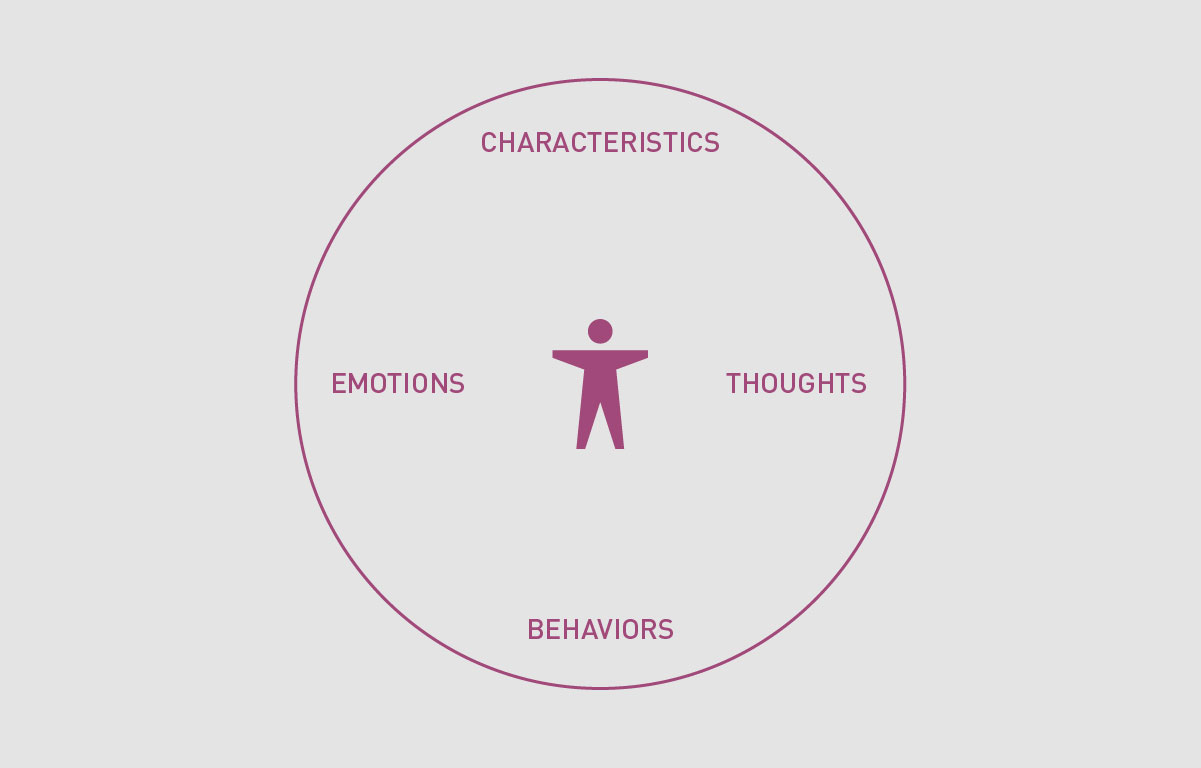Like it or not, we interact with brands on a deeply personal level. We laugh at their antics, cry at their sentiment, scoff at their missteps, and are defined by our connections to them. We defend those brands with whom we identify and denounce those to whom we object. We recognize their voices as we would a close friend over the telephone, and feel a kinship with the stories that make up their lives.
If our relationships with brands so closely mirror those with our fellow humans, shouldn’t we think of brands as people? Sure, ours is a world where we anthropomorphize just about everything in sight, but there will always be a few things that are useful to think about in human terms. Brands are among them.
Brand personality, then, is the collection of emotional, thought, and behavioral patterns unique to a brand that is consistent over time. Its personality comprises the defining characteristics of any brand—the attributes that make Virgin a roguish, devil-may-care rock star, or IBM a stodgy, by-the-numbers analyst. To truly understand brand personality, you have to get into the psyche of a brand, and analyze it in a meticulously intimate process. In short, you have to be a brand psychologist.
As is the case with human psychology, the aim of brand psychology is to align a brand’s outward projection—its relationship with the world around it—with its true inner self. Incongruence amongst these two iterations sends warning signals to consumers. Just as your gut tells you when someone is being phony or otherwise compromising their values, so can consumers tell when a brand is being inauthentic. It’s off-putting, and undermines the brand-consumer connection. Alignment amongst internal and external dimensions is the mark of a truly authentic brand. And brand authenticity fosters deep and meaningful relationships between a brand and its customers.
Parsing a Brand
Brand personality has been approached from many different angles over the years—some superficial, others more profound. In our treating of a brand as a person, we like to draw on proven behavioral science, parlaying decades of human psychological research as it correlates to brands. The framework we’ve developed comprises four dimensions of brands—characteristics, behaviors, emotion, and intelligence—each of which is defined by nuanced attributes.

Its characteristics are how a brand is perceived by those it interacts with. They are its outward, most readily observable attributes. Apple, for example, embodies characteristics like sleek, modern, minimalist, and stark. Its behaviors are how a brand acts within the context of the world around it. Red Bull is adventuresome, risk-taking, bold, and invigorated.
Character and behavior are markers of deeper psychological truths, though. They signify how a person or a brand thinks and feels about the world. A brand’s relative emotion (EQ) and intelligence (IQ) ultimately determine how it behaves and interacts. Just as with people, some brands are more emotionally driven—motivated by passion or zeal. And some are more intelligently driven—inspired by rational analysis and logical insight. As you might imagine, the quintessentially emotion-driven brand looks and feels a lot different than its intelligence-driven counterpart.
The dimensions of a brand’s personality can’t be pulled from a hat or even divined from an introspective spiritual journey. We’d love it if we could give a brand a handful of peyote, send it off into the desert, and tell it not to come back without knowing its innermost self. But such a scenario would unfortunately be as unreliable as it is unrealistic.
Like nearly every other element of brand strategy, the core attributes of brand personality must be based on the outcome of comprehensive brand research. Only through internal stakeholder research, in-depth customer interviews, and other research efforts can you hope to reveal real-world truths about your brand’s self—and its personality.
Brand Personality Incarnate
One way to think about brand personality is as the manifestation of the various attributes of brand self. As with people, a brand’s place in the world is largely determined by its personality. There are three primary areas we can look to for markers of brand personality: how a brand looks, sounds, and acts.
- Look: A brand’s look is its visual identity. It comprises its logo, color palette, typography, photography, collateral, etc. It is the overarching look and feel that becomes indistinguishable from a truly authentic brand. When I say Coca-Cola, what color comes to mind? Which typeface? Each of these elements conveys powerful emotions, some subtler than others.
- Sound: A brand’s sound is embodied in its voice. The style of the language it employs in conveying its message and the tone in which that message is conveyed are the primary attributes that define brand voice. Jaguar these days relies on an elevated linguistic style combined with devious tone to portray their product as the choice of the world’s savviest British villains.
- Act: The way a brand acts is the way it behaves in the context of the larger world. It’s the unique way it engages with customers so as to foster a feeling of identity and special connection. Virgin has positioned itself in the role of Robin Hood in its various brand iterations. It disrupts industries that are dominated by tyrannical corporations, stealing from the proverbial “rich” and giving to the poor (read consumers) via lower cost, higher quality experiences.
You may not be able to shake their hands or give them hugs, but that doesn’t mean we don’t relate to brands like people. The connections we forge with our preferred brands define who we are. It isn’t the brand itself with which we identify; it’s that brand’s personality. The quirks and idiosyncrasies that differentiate a brand are what truly define it—how it looks, sounds, and acts as an agent in the world, and what these attributes reveal of its deeper self. Brand psychology gets to the heart of it all, measuring the authenticity of a brand. And authenticity is the true measure of the brand-customer relationship.



